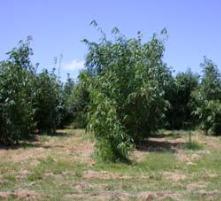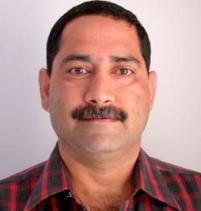CQU study backs use of effluent for tree plantations
Published on 08 December, 2004
Contributed by internship student Helen Sarcich.
Environmental protection has recently been given a boost with the release of research findings that indicate effluent can be used to irrigate tree plantations with positive growth results.
 The research conducted by Doctoral Fellow Ajay Sharma and Dr Nanjappa Ashwath from the Central Queensland University Plant Sciences group, examined not only the water use, but also the changes in soil chemistry and microbial build-up in seven plantation systems consisting of trees, bamboos and grasses.
The research conducted by Doctoral Fellow Ajay Sharma and Dr Nanjappa Ashwath from the Central Queensland University Plant Sciences group, examined not only the water use, but also the changes in soil chemistry and microbial build-up in seven plantation systems consisting of trees, bamboos and grasses.
The research was conducted jointly with the Livingstone Shire Council at a site near Yeppoon, and aimed to find alternatives for the use of effluent instead of discharging it into waterways. It also aimed to provide alternative sources of water for those who farm tree plantations in drought-affected areas.
Mr Sharma and Dr Ashwath planted the five-acre experimental site with Ma Bamboo, Flooded Gum, and Pangola Grass, and then monitored their growth, soil properties and water consumption.
The research has concluded that Flooded Gum was the more favourable choice, as it grew well and was able to remove more effluent from the soil, resulting in less wastewater contamination in the soil and groundwater.
 The research also found that medium-sized trees were more efficient in removing water than large trees, suggesting that plantations aimed for use such as pulpwood (which can be harvested in five years) are highly suitable for effluent irrigation.
The research also found that medium-sized trees were more efficient in removing water than large trees, suggesting that plantations aimed for use such as pulpwood (which can be harvested in five years) are highly suitable for effluent irrigation.
Continued irrigation changed soil chemistry with the build-up of sodium, which could affect both soil structure and plant growth.
Mr Sharma cautioned that periodic monitoring of the irrigated area is essential to minimise losses to productive capacity of the irrigated site.

